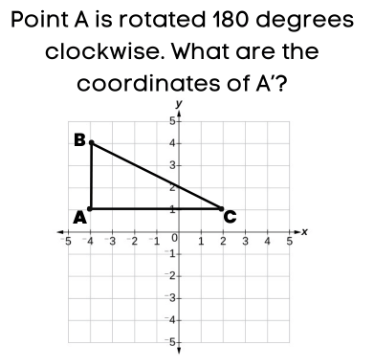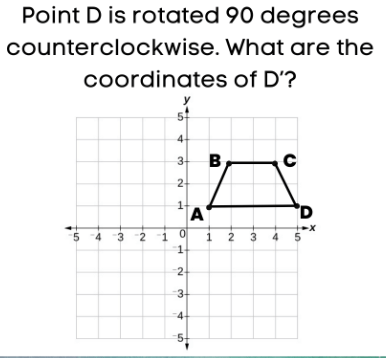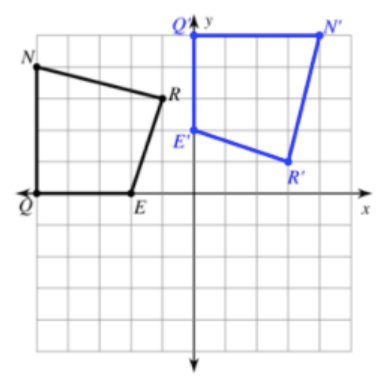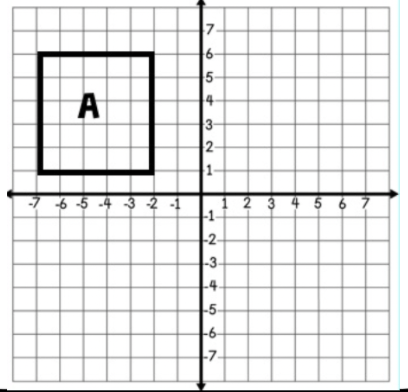Turn

(4, -1)
Describe the rotation that has occurred:
(-1,1) → (-1,1)
A 360 degree rotation.
The point G(–5,–1)is rotated 180° counterclockwise around the origin. What are the coordinates of the resulting point, G'?
G' is (5, 1).
Another term for a 180 degree rotation is a _________.
Half Rotation
Which direction is shown?

Counter Clockwise
When you rotate 360 degrees does it matter the direction you go in? Explain why or why not.
No, either direction you go the image will end up in the same place as the pre image.
Describe the rotation that has occurred:
(1,1) → (-1,-1)

D' is (-1, 5)
True or False: A 90 degree clockwise rotation is the same as a 270 degree counterclockwise rotation.
True
Each quadrant is _______ degrees.
90
How many degrees was the figure rotated? DOUBLE POINTS IF YOU CAN GIVE TWO ANSWERS.
90 degrees clockwise or 270 degrees counter clockwise.
Rectangle A is rotated using the rule (x,Y) → (-x,-y). What quadrant will A' be located in?

Quadrant IV.
Write the algebraic notation for a 270 clockwise rotation.
(x,y) ------> (-y, x)
In a rotation the pre-image and the image are __________.
Congruent
What is the angle of rotation for this counterclockwise rotation about the origin?
270 degrees
Rotate the point (7,8) around the origin 90 degrees counterclockwise.
State the image of the point.
(-8,7)
Write the algebraic notation for rotating 90 degrees counter clockwise.
(x,y) -------> (-y, x)
If you were to rotate ABCD 90° counterclockwise about the (1,-4), what would the coordinate of A' be?
DOUBLE JEOPARDY!
(-8, -2)
Point C(4,5) is rotated 270° counterclockwise around the (3,-1). What are the coordinates of the resulting point, C'?
C' IS (9,-2)

